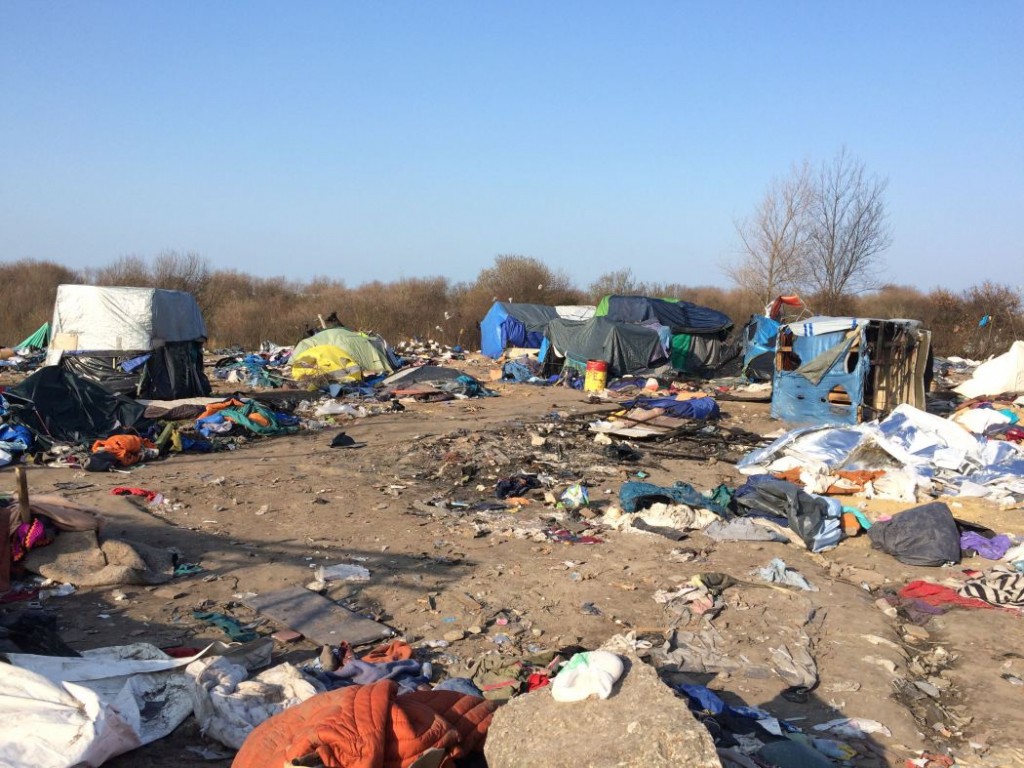“The Dunkirk refugee camp is a step in the right direction, but there are still many more steps to be taken.”
Over the past few weeks there has been an outpour of coverage about the relocation and displacement of refugees living at the “Jungle” camp in Calais, France. The situation has left huge areas of the camp demolished and thousands of refugees homeless.
However, as the media focuses on the “Jungle” camp, the Dunkirk refugee camp that is situated only 30 miles north of Calais, has been largely ignored – despite being home to roughly 3,000 refugees. Dire conditions at the Grand-Synthe refugee camp in Dunkirk led to the opening of a new refugee camp at the site in March. This has now become France’s first refugee camp to meet international humanitarian standards.
The new refugee camp, funded by the charity Medecin Sans Frontieres (MSF) cost over €3.1million to build. The camp is expected to contain wooden cabins that will house approximately 2,500 refugees, a field hospital, and proper toilet facilities.
Sneh Jani, a young volunteer at the refugee camp in Calais, writes for IPF about her experience visiting the Dunkirk camp and how conditions differ between these two sites.
Calais: Destruction, devastation and desperation
The new refugee camp in Dunkirk was opened last Monday, and it is impressive. In fact it’s unbelievable when you compare it to the camp in Calais. After spending an afternoon in the newly erected refugee camp in Dunkirk, I left feeling positive. The most positive I have ever felt during all the visits to date that I have made to the refugee camps. That positivity disappeared all too quickly when we arrived in the Calais camp.
Headlines of parts of the refugee camp in Calais being bulldozed are shocking. The act of crushing the most fragile and volatile homes of the most vulnerable people is outright inhumane. And yet it is happening.
We came across Mohammed, a 17-year-old from Darfur, when we were walking through the burnt down areas of the camp. He invited us to meet his brother and we followed him through the ruins. The devastation and desperation was inescapable. Mohammed explained that at 7am on Monday their homes were going to be bulldozed. They didn’t know where they were going to be moved or where they would be allowed to go.
“That is the life,” Mohammed said.
In Calais, thousands of people have had their homes bulldozed. People have been offered shelter in containers, which are essentially metal dorms that house 12 people per cabin, requiring fingerprints on entry and exit.
We were told that several camps have popped up between Calais and Dunkirk. I have no idea what kind of conditions people are living in but I am guessing it resembles Calais more than they rememble Dunkirk.
It’s a 30-minute drive between Calais and Dunkirk, and although they seem worlds apart, the reality behind each of these camps is all too similar.
Dunkirk: Stereotypes replaced by laughter, chai and food
The shiny new camp in Dunkirk has replaced the Grande Synthe camp, which was shut down because conditions were so awful. While the original camp was home to approximately 3,000 people, the new one only has a capacity of 1,300.
Operations inside the Dunkirk camp appeared to be running like a well-oiled machine. Teams operating there (run by the charity Utopia 56) are well-organised and well-informed. Upon our arrival we were immediately allocated a task. We then spent four hours picking up litter from around the shelters and replacing people’s full bin bags with new, empty ones. Tasks allocated to volunteers served a purpose.
During our clearing up of the mess, many residents came out of their shelters to thank us. Others came out to tell us not to worry about their immediate vicinity and that they would clean it themselves. The practice of caring for their new surroundings appeared to foster a sense of pride and respect among people.
The stereotypical images of a refugee camp could not have been further from the reality seen at Dunkirk. We were offered an endless stream of cups of chai (tea) and plates of food. We also spent half of the afternoon playing in the sunshine with a lovely Kurdish family.
With the sun shining and everyone around laughing and joking, there was a real sense of community – a sense of fun even. It almost felt like we were in a park, not a refugee camp.
There is no question that the new camp in Dunkirk is a positive step forward. Aid agencies are able to deliver the support required to allow people to live in more dignified conditions. However, we must remain wary of accepting the conditions in Dunkirk as the norm. If this were to become the new headline – that France is now trying its best to help in this crisis – it cannot be accepted as the truth.
For the 1,300 people who are living in safe, secure and humane conditions, there are thousands more who remain without proper shelter and sufficient support. The Dunkirk refugee camp is a step in the right direction, but there are still many more steps to be taken.


